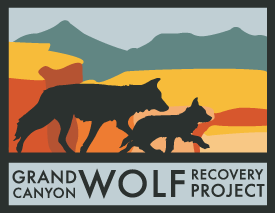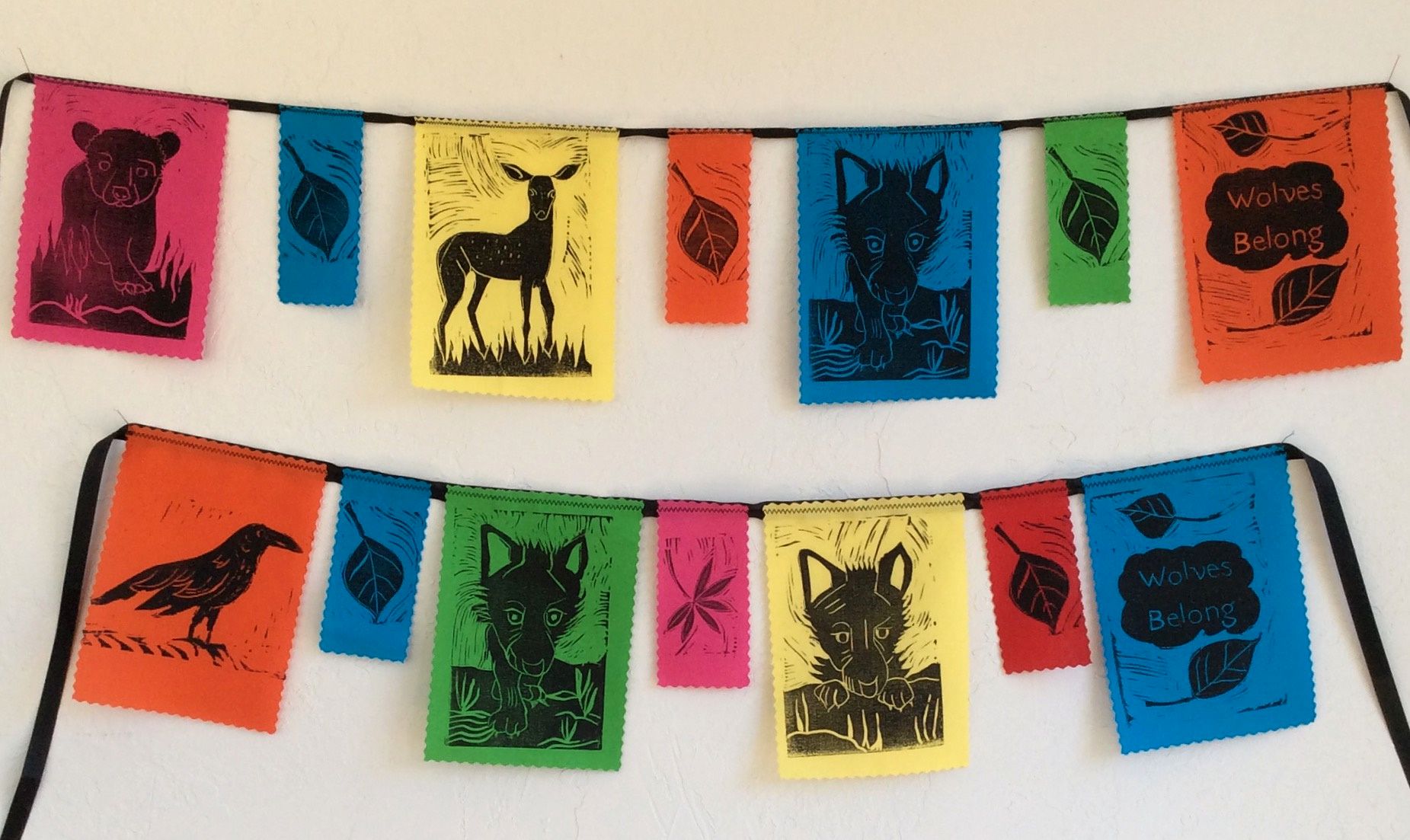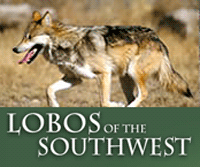Predation is an important ecological process
Aldo Leopold, the father of modern wildlife management and author of A Sand County Almanac, admonished wildlife managers to retain all the pieces of our ecosystems (1953). Using modern analysis, present day ecologists are finding Leopold's directive to be right on the mark. Predation and particularly predation by large carnivores is a necessary component of all healthy ecosystems. Study after study has shown that predator loss leads to biodiversity loss (Diamond 1992). Large predator presence is so important, in fact, that conservation biologist John Terborgh (1988) wrote that "Disrupting the balance by persecuting top carnivores, by hunting out peccaries, pacas, and agoutis, or by fragmenting the landscape into patches too small to maintain the whole interlocking system, could lead to a gradual and perhaps irreversible erosion of diversity at all levels - both plant and animal." Recognition of this importance has prompted leading wildlife professional organizations such as The Wildlife Society and The Society for Conservation Biology, to dedicate special issues of their journals expressly to predator ecology and conservation. Moreover, these scientific societies have placed the restoration of predators high on their list of conservation priorities.
Predation does not always translate into lowered prey numbers
Although many quite vigorously contend that every bite a wolf or other predator takes out of a prey species adds to the other mortality factors already impacting prey populations, predator-prey relationships are rarely that simple (Krebs 1997). For example, in the Adirondacks of New York state, a healthy wolf population is expected to take approximately 4,000 white-tailed deer per year (Hosack 1996). But nearly 18,000 deer die each year of starvation during the harsh winters. Does that mean that after wolf reintroduction mortality is going to jump to 22,000 per year? Probably not. A more likely scenario is that mortality will be compensatory rather than additive and the region would experience an equivalent reduction in winter mortality. In simple terms, wolves would kill the animals that are most likely to die anyway instead of killing an additional amount over the normal winter die off.
In addition, wolves and other predators often have indirect effects on prey population dynamics. In Washington state's Olympic National Park, elk reproduction appears to be dampened because herds are dominated by older females who typically have fewer twins. As wolves preferentially prey on older animals (Pimlott et al. 1969), their future presence could actually increase overall reproduction in the herd. Moreover, reduction in adult ungulate numbers has been shown to increase fawn survival (White and Bartmann 1997).
If the biota, in the course of aeons, has built something we like but do not understand, then who but a fool would discard seemingly useless parts? To keep every cog and wheel is the first precaution of intelligent tinkering. --- Aldo Leopold
All predators serve different ecological roles
Some people mistakenly believe that all predators serve the same function. But while coyotes and wolves appear to be very similar, their roles and impacts on ecosystems are very different. Wolves are coursing predators, which means that they tend to chase their prey until they find an animal that is weak. This is very different from the opportunistic way coyotes generally hunt--taking whatever crosses their path. Wolves are also pack hunters who hunt cooperatively and whose populations respond very quickly to increases or decreases in prey availability. Coyotes are more individualistic: hunting in smaller units and responding very quickly to increases in the prey bases and very slowly to decreases due to the adaptability of their hunting skills. As a consequence of their different behaviors, they have different impacts on their prey. Wolves tend to eliminate the old, sick, and genetically inferior animals from populations (Pimlott et al. 1969) and coyotes, like bears and cougars, seem to take animals without regard to their condition (O'Gara et al. 1988).
Likewise, other predators hunt differently and take different animals at different times and under different circumstances. Predator-prey relationships are very complex and have evolved over thousands and thousands of years. As our understanding of the interplay between predators and prey has increased, so has our acknowledgment these relationships should be maintained intact.
Large predators control smaller predators
In 1988, Michael Soulé, founder of The Society for Conservation Biology, documented the phenomenon known as meso-predator release (Soulé et al. 1988). He found that removal of large predators led to a tremendous increase in smaller predators. When wolves are eliminated coyote populations explode. Likewise, when coyotes are removed, foxes prosper. The overall result is an increase in the impact of predators on prey. To illustrate this last point, consider that wolf expert L. David Mech has estimated that each reintroduced wolf pack (10 wolves) in Yellowstone will displace 50 coyotes. When looked at from a hunter's point of view, it seems clear that 1000 pounds of wolves will require less food than 1750 pounds of coyotes. Since the reintroduction in 1995, there are now 80% less coyotes in the Yellowstone region.
Real life examples of meso-predator release abound. When red wolves disappeared from the Southeast coyotes moved in and raccoons increased. In Mississippi this greatly impacted wild turkey reproduction (Miller et al. 1997). Similarly, removal of coyotes in the prairie pothole region benefited fox populations but lowered duck nest success by 15% (Sovada et al. 1995). Fortunately, two recent studies in the Northern Rockies (Arjo et al. 1997 and Crabtree, unpub.) demonstrate that these trends can be reversed. Both studies indicated that recolonizing and reintroduced wolves are displacing and in some instances killing coyotes. The remaining coyotes are relegated to the margins of occupied wolf habitats and are making dietary shifts back to smaller prey items such as rodents.
Armed with a new understanding of the role of predators, public opinion about predators has shifted dramatically (Brunson et al. 1997). Hopefully, that shift can be translated into predator management, conservation and restoration policies that are driven by the best available science and that strive to maintain appropriate predator assemblages in all natural areas across our nation.
Literature Cited
Arjo, W.M., R.R. Ream, and D. Pletscher. 1997. The effects of wolf colonization on coyote behaviors, movements, and food habits in northwestern Montana. *
Brunson, M., T.A. Messmer, D.G. Hewitt, and D. Reiter. 1997. North American public attitudes toward predators, predation, and predator management. *
Diamond, J. 1992. Must we shoot deer to save nature? Natural History. 2-8.
Hosack, D. 1996. Biological potential for eastern timber wolf re-establishment in Adirondack Park. Wolves of America conference Proceedings. 24-30.
Krebs, C.J. 1997. The role of predation theory in wildlife science and management.*
Leopold, A. 1953. A Sand County Almanac with essays on conservation from Round River. New York: Ballantine Books. 190.
Miller, D.A., L. W. Burger, B. D. Leopold, and G.A. Hurst. 1997. Wild turkey hen survival and cause-specific mortality in Central Mississippi. *
O'Gara, B.W. and R.B. Harris. 1988. Age and condition of deer killed by predators and automobiles. 52:316-320.
Pimlott, D.H., J.A. Shannon, and G.B. Kolenosky. 1969. The ecology of the timber wolf in Algonquin Provincial Park. Can. Dep. Lands For. Res. Branch Res. Report. No. 87.
Soulé, M.E., D.T. Bolger, A.C. Alberts, J. Wright, M. Sorice, and S. Hill. 1988. Reconstructed dynamics of rapid extinctions of chaparral-requiring birds in urban habitat islands. Conservation Biology. 2:75-92.
Sovada, M.A., A.B. Sargeant, J.W. Grier. 1995. Differential Effects of Coyotes and Red Foxes on Duck Nest Success. Journal of Wildlife Management. 59:1-9.
Terborgh, J. 1988. The big things that run the world. Conservation Biology. 2:402-403.
White, G.C. and R.M. Bartmann, 1997. Effect of density reduction on overwinter survival of mule deer fawns. *
*Denotes scientific findings presented at the 1997 Annual Meeting of The Wildlife Society in Snowmass, Colorado. September 21-27.





